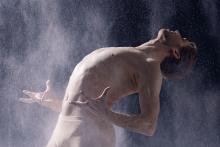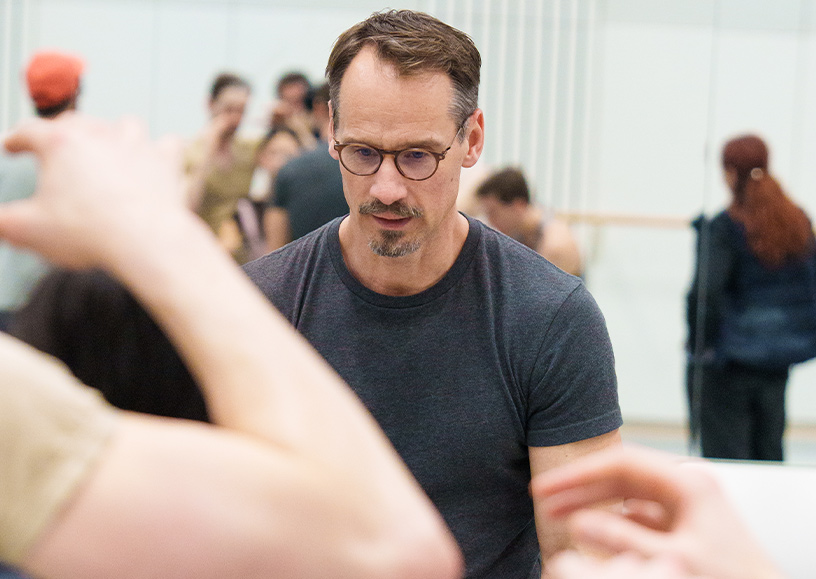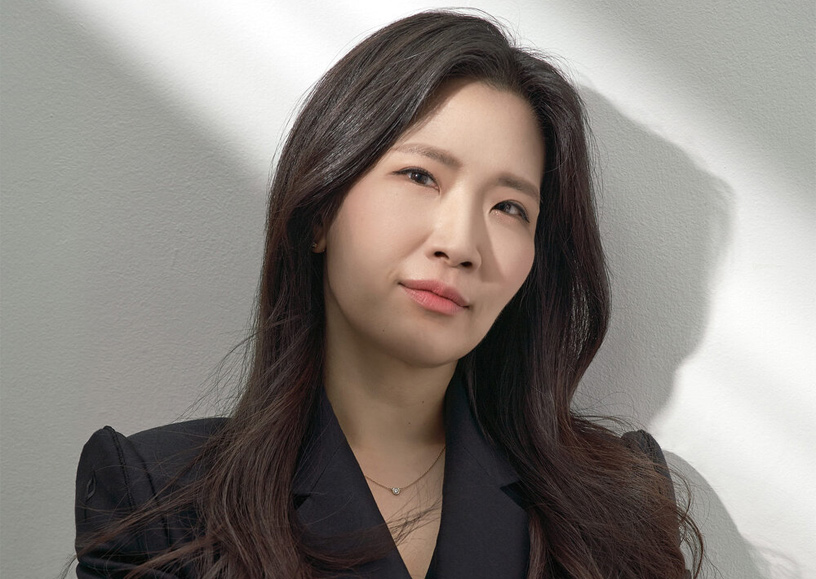Messa da Requiem online programme

Performance information
Voorstellingsinformatie
Performance information
Duration
1 hour and 40 minutes, no interval
This performance is sung in Latin.
Christian Spuck’s production of the Messa da Requiem touches on general human themes and is not a choreographic interpretation of the Catholic Requiem text. In order to emphasise the cross-denominational character of the performance, the artistic production team has decided not to use surtitles during this performance.
This page contains both the original Requiem text and its English translation.
Makers
Conductor
Eun Sun Kim
Director and choreographer
Christian Spuck
Set design
Christian Schmidt
Costume design
Emma Ryott
Lighting design
Martin Gebhardt
Dramaturgy
Michael Küster
Claus Spahn
Cast
Soprano
Federica Lombardi (9, 13, 16, 19, 21, 25 Feb)
Guanqun Yu (10, 14, 17, 22 Feb)
Mezzo-soprano
Yulia Matochkina (9, 13, 16, 19, 21 Feb)
Agnieszka Rehlis (10, 14, 17, 22, 25 Feb)
Tenor
Freddie De Tommaso (9, 13, 16, 19, 21 Feb)
Saimir Pirgu (10, 14, 17, 22, 25 Feb)
Bass
Alexander Vinogradov (9, 13, 16, 19, 21 Feb)
Maxim Kuzmin-Karavaev (10, 14, 17, 22, 25 Feb)
Rotterdam Philharmonic Orchestra
Dancers
Het Nationale Ballet
Staging
Jean-François Boisnon
Fabio Palombo
Eva Dewaele
Jean-François Kessler
Chorus of Dutch National Opera
Chorus master
Edward Ananian-Cooper
Original production by
Opernhaus Zürich
Chorus of Dutch National Opera
Sopranos
Esther Adelaar
Patricia Atallah
Diana Axentii
Lisette Bolle
Bernadette Bouthoorn
Else-Linde Buitenhuis
Jeanneke van Buul
Caroline Cartens
Zane Danga
Anna Emelianova
Nicole Fiselier
Kitty de Geus
Melanie Greve
Deasy Hartanto
Gonnie van Heugten
Oleksandra Lenyshyn
Simone van Lieshout
Tomoko Makuuchi
Sara Moreira Marques
Vesna Miletic
Elizabeth Poz
Janine Scheepers
Jannelieke Schmidt
Kiyoko Tachikawa
Claudia Wijers
Altos
Irmgard von Asmuth
Elsa Barthas
Ellen van Beek
Anneleen Bijnen
Daniella Buijck
Rut Codina Palacio
Johanna Dur
Valérie Friesen
Yvonne Kok
Fang Fang Kong
Carlijn Kooijmans
Maria Kowan
Myra Kroese
Liesbeth van der Loop
Maaike Molenaar
Emma Nelson
Marieke Reuten
Carla Schaap
Irina Scheelbeek-Bedicova
Klarijn Verkaart
Tenors
WimJan van Deuveren
Pim van Drunen
Frank Engel
Milan Faas
Ruud Fiselier
Cato Fordham
Livio Gabbrielli
John van Halteren
Erik Janse
Robert Kops
Leon van Liere
Raimonds Linajs
Roy Mahendratha
Tigran Matinyan
Sullivan Noulard
Martin van Os
Richard Prada
Mitch Raemaekers
Mirco Schmidt
Julien Traniello
Jeroen de Vaal
Bert Visser
Rudi de Vries
Basses
Ronald Aijtink
Peter Arink
Bora Balci
Jorne van Bergeijk
Nicolas Clemens
Emmanuel Franco
Jeroen van Glabbeek
Julian Hartman
Agris Hartmanis
Hans Pieter Herman
Sander Heutinck
Tom Jansen
Michal Karski
Roele Kok
Dominic Kraemer
Richard Meijer
Wojtek Okraska
Christiaan Peters
Matthijs Schelvis
Jaap Sletterink
Ian Spencer
Vincent Spoeltman
René Steur
Harry Teeuwen
Rob Wanders
Rotterdam Philharmonic Orchestra
First violin
Marieke Blankestijn
Hed Yaron Meyerson
Saskia Otto
Arno Bons
Mireille van der Wart
Rachel Browne
Maria Dingjan
Marie-José Schrijner
Noëmi Bodden
Petra Visser
Sophia Torrenga
Hadewijch Hofland
Annerien Stuker
Koen Stapert
Second violin
Charlotte Potgieter
Laurens van Vliet
Tomoko Hara
Jun Yi Dou
Eefje Habraken
Maija Reinikainen
Babette van den Berg
Melanie Broers
Inge Jongerman
Letizia Sciarone
Ilka van der Plas
Lana Trimmer
Emily Wu
Viola
Anne Huser
Roman Spitzer
Galahad Samson
Kerstin Bonk
Janine Baller
Francis Saunders
Veronika Lénártová
Rosalinde Kluck
Leon van den Berg
Olfje van der Klein
Cello
Emanuele Silvestri
Joanna Pachucka
Daniel Petrovitsch
Mario Rio
Gé van Leeuwen
Eelco Beinema
Carla Schrijner
Pepijn Meeuws
Yi-Ting Fang
Double bass
Matthew Midgley
Jonathan Focquaert
Harke Wiersma
Arjen Leendertz
Ricardo Neto
Dobril Popdimitrov
Flute
Juliette Hurel
Désirée Woudenberg
Beatriz Da Silva Baiao
Oboe
Remco de Vries
Ron Tijhuis
Clarinet
Julien Hervé
Romke-Jan Wijmenga
Bassoon
Lola Descours
Marianne Prommel
Hans Wisse
Simon Vandenbroecke
Horn
David Fernandez Alonso
Wendy Leliveld
Richard Speetjens
Pierre Buizer
Trumpet
Alex Elia
Simon Wierenga
Jos Verspagen
Raymond Rook
William Castaldi
Giovanni Giardinella
Martine Reijenga-Stilma
Andreu Vidal
Trombone
Pierre Volders
Remko de Jager
Rommert Groenhof
Tuba
Hendrik-Jan Renes
Timpani
Danny van de Wal
Percussion
Ronald Ent
Production team
Assistant-conductor
Boudewijn Jansen
Assistant-director
Jean-François Kessler
Assistant-director and performance director
Maarten van Grootel
Associate set designer
Florian Schaaf
Assistants to the chorus master
Ad Broeksteeg
Lochlan Brown
Rehearsal pianists
Ad Broeksteeg
Peter Lockwood
Language coach
Valentina di Taranto
Staging of the choreography
Jean-François Boisnon
Fabio Palombo
Eva Dewaele
Jean-François Kessler
Ballet masters
Judy Maelor Thomas
Larissa Lezhnina
Guillaume Graffin
Jozef Varga
Stage management
Marie-José Litjens
Pieter Heebink
Wolfgang Tietze
Master carpenter
Jop van den Berg
Lighting manager
Fred Kooring
Props craftsman
Remko Holleboom
Sound engineer
David te Marvelde
First make-up artist
Salome Bigler
Costume production
Lars Willhausen
Michelle Cantwell
First dresser DNO
Sandra Bloos
First dresser DNB
Andrei Brejs
Artistic affairs and planning
Vere van Opstal
Dramaturgy
Naomi Teekens
Production manager
Anu Viheriäranta
Set supervisor
Sieger Kotterer
Orchestra managers
Esther van Helvoort
Monique van Zeist
Cast sheet - dancers
The cast sheet for Messa da Requiem will be posted on this page one day before the performance and will be available until one day after the performance.
Cast sheet Saturday 25 February 2023
Cast sheet
Cast sheet Saturday 25 February 2023
Please note that casting is subject to change right up to the performance.
Erica Horwoord, Yuanyuan Zhang, Riho Sakamoto, Floor Eimers
Emma Mardegan, Chloë Réveillon, Salome Leverashvili, Alexandria Marx, Kira Hilli, Inés Marroquín, Mila Nicolussi Caviglia, Sebia Plantefève-Castryck, Luiza Bertho, Hannah de Klein, Khayla Fitzpatrick, Wendeline Wijkstra, Antonina Tchirpanlieva, Yvonne Slingerland
Jared Wright, James Stout, Jakob Feyferlik
Martin ten Kortenaar, Giovanni Princic, Timothy van Poucke, Daniel Montero Real, Edo Wijnen, Dustin True, Dingkai Bai, Daniel Robert Silva, Davi Ramos, Sem Sjouke, Conor Walmsley, Bela Erlandson, Rafael Valdez, Leo Hepler, Sander Baaij
Messa da Requiem - text
Follow the link below to read the original Requiem text and its English translation.
Messa da Requiem - text
I. REQUIEMINTROÏTUS |
I. REQUIEMINTROÏTUS |
|
KYRIE |
KYRIE Lord, have mercy upon us. Christ, have mercy upon us. Lord, have mercy upon us. |
II. DIES IRAEDIES IRAE |
II. DIES IRAEDIES IRAE |
|
Quantus tremor est futurus, |
How great will be the terror, when the Judge comes, who will smash everything completely. |
|
TUBA MIRUM |
TUBA MIRUM The trumpet, scattering a wondrous sound through the tombs of every land, will gather all before the throne. |
|
MORS STUPEBIT |
MORS STUPEBIT Death and nature shall stand amazed, when all Creation rises again, to answer to the Judge. |
|
LIBER SCRIPTUS |
LIBER SCRIPTUS The written book will be brought forth, in which all is contained, from which the world will be judged. Therefore, when the Judge takes His seat, whatever lies hidden will be revealed. Nothing will remain unavenged. |
|
Dies irae, dies illa |
The day of wrath, that day will dissolve the world in ashes, as David and Sybil prophesied. |
|
QUID SUM MISER |
QUID SUM MISER What can a wretch like me say? Whom shall I ask to intercede for me, when even the just ones are unsafe? |
|
REX TREMENDAE |
REX TREMENDAE King of dreadful majesty, Who freely saves the redeemed ones, save me, O font of pity. |
|
RECORDARE |
RECORDARE Recall, merciful Jesus, that I was the reason for your journey: do not destroy me on that day. In seeking me, you sat down wearily, enduring the Cross, you redeemed me: Do not let these pains to have been in vain. Just Judge of punishment, give me the gift of redemption before the day of reckoning. |
|
INGEMISCO |
INGEMISCO I sigh as the guilty one, and my face blushes with guilt: spare the supplicant, O God. You who absolved Mary Magdalene and heard the prayer of the thief, have given me hope, as well. |
|
Preces meae non sunt dignae, |
My prayers are not worthy, but show mercy, O benevolent one, lest I burn forever in fire. |
|
Inter oves locum praesta |
Give me a place among the sheep, and separate me from the goats placing me on your right hand. |
|
CONFUTATIS MALEDICTIS |
CONFUTATIS MALEDICTIS When the damned are silenced, and given to the fierce flames, call me with the blessed ones. I pray, suppliant and kneeling, with a heart contrite as ashes, take my ending into your care. |
|
Dies irae, dies illa |
The day of wrath, that day |
|
LACRIMOSA |
LACRIMOSA That day is one of weeping. on which shall rise from the ashes the guilty man, to be judged. Therefore, spare this one, O God. Merciful Lord Jesus: grant them peace. Amen. |
III. OFFERTORIUMDOMINE JESU CHRISTE |
III. OFFERTORIUMDOMINE JESU CHRISTE |
|
HOSTIAS |
HOSTIAS We offer to you, O Lord, sacrifices and prayers. Receive them on behalf of those souls whom we commemorate today. Grant, O Lord, that they pass from death into that life, you promised to Abraham and his descendants. |
IV. SANCTUSSanctus, sanctus, sanctus, |
IV. SANCTUSHoly, holy, holy, |
V. AGNUS DEIAgnus Dei, qui tollis peccata mundi, |
V. AGNUS DEILamb of God, who takes away the sins of the |
VI. LUX AETERNALux aeterna luceat eis, Domine, |
VI. LUX AETERNALet eternal light shine upon them, O Lord, |
VII. LIBERA MELibera me, Domine, de morte aeterna, |
VII. LIBERA MEDeliver me, O Lord, from eternal death on that |
|
Requiem aeternam dona eis, Domine, |
Grant them eternal rest, O Lord, and may perpetual light shine upon them. |
|
Libera me, Domine, de morte aeterna, |
Deliver me, Lord, when the heavens and the eternal death on that awful day. Deliver me. |
‘Verdi’s Requiem moves you to the depths of your soul’
Director and choreographer Christian Spuck about Messa da Requiem.
‘Verdi’s Requiem moves you to the depths of your soul’
In 2013, when Christian Spuck was asked to provide a quote about the music of Giuseppe Verdi for the magazine of Opernhaus Zürich, he could never have imagined the far-reaching consequences of his statement. His answer was that it might be interesting to choreograph a work to Verdi’s music someday. And the world premiere of his production of Messa da Requiem took place three years later.
Spuck says, “During the creative process, I continually wondered what I’d embarked on. How could I make something to fit music that’s already so beautiful and powerful on its own that actually it needs no staging whatsoever? Messa da Requiem was not created as an opera or ballet, so it was completely up to us to decide what we should do with it.”
Emotional impact
Such great freedom in creating a new production goes hand in hand with making fundamental decisions. “For a work like this, you can go in two directions: you can make something ‘to’ the music – a story with characters – or you can use abstract images to create a staging that helps the audience understand the music better.” Spuck opted for the latter, resulting in a Gesamtkunstwerk for a hundred chorus members, four soloist singers and thirty-seven dancers, which emphasises and reinforces the emotional impact of the composition. “I think that nearly everyone who listens to Messa da Requiem feels this emotional impact. The music moves you to the depths of your soul. When I first came into contact with the piece myself – I was sixteen and heard it on the radio – I was completely overwhelmed and recorded it on an old cassette recorder, so that I could listen to it over and over again. Though I didn’t understand the words, I had a strong feeling the music was trying to tell me something.”
Hellish threats to comforting music
For Spuck, it was therefore important that his production of Messa da Requiem revolved around the music. “This production really takes the composition as its starting point, interpreting it in movement and sixteen short scenes on stage – as respectfully as possible. I hope that the staging brings the audience even closer to the music and that even people who know the work inside out can gain new insights into it.” The original text of the Requiem play a less important role in this. “Messa da Requiem was originally a Catholic Mass, and the words are pretty cruel and not very human-friendly, with threats about the hell that awaits people after death. But for me, that’s not what the work is about. Verdi himself was critical about religion, and in my view the music he wrote is actually very human. The composition aims to convey emotions like anger, sorrow (you can practically hear the tears falling in the ‘Lacrimosa’) and despair, but at the same time it offers protection and comfort. The music is about us as people, and about what we feel when we’re confronted with death: the most extreme emotion you can experience as a human being.”
The emotional and comforting character of the composition is reflected in the choreography Spuck created to the Requiem. “All the emotions of the music are put into an abstract choreographic language, but are still clearly recognisable. For instance, many movements involve holding and embracing one another, or fighting against pain.”

One world
Whereas co-productions between dance and opera often result in the two art forms being separated on stage, Spuck wants to present all the artists in Messa da Requiem as one group. So he places the singers and dancers together on stage, whereby the chorus is active in a very physical way as well as vocally, often interacting with the dancers. “The singers and dancers form one society. They are all human beings who are dealing with a moment of loss. It’s important they don’t play a role or try to convey an exaggerated emotion, but just be themselves. For opera singers, in particular, this can be challenging, as they are often used to portraying a character. I always tell them they shouldn’t try to create something to the music, but rather present the music as if it were their own composition.”
Bringing together companies
In his Messa da Requiem, Spuck not only brings together the art forms of opera and ballet, but also the companies who practice these art forms. “Normally speaking, opera and ballet companies work more or less in parallel, but in Messa da Requiem, they meet one another. In Zurich, that was a very special experience at the time. When the dancers heard the chorus sing for the first time, they shed tears of emotion. And vice versa, the chorus members took virtually no breaks during rehearsals, as they wanted to keep watching how the dancers rehearsed. One of the nicest things about it was that the singers and dancers really got to know each other, which has led to some lasting friendships.”
At Dutch National Opera & Ballet – where Messa da Requiem is being performed for the first time outside Opernhaus Zürich – Spuck hopes to achieve the same result. “Up to now, the artists and the members of the artistic team are very enthusiastic, so I’m really looking forward to seeing Messa da Requiem in Amsterdam.” However, this does not mean that the production of Messa da Requiem in Dutch National Opera & Ballet will be a direct copy of the original Zurich production. “After all, the work will be performed here by very different singers and dancers, so small changes have to be made in order to better showcase the artists of Dutch National Opera & Ballet. Amsterdam will really get its own version of Messa da Requiem.”
Text: Rosalie Overing
Translation: Susan Pond
‘I want to bring out the beauty of Verdi’s music’
A conversation with Eun Sun Kim.
‘I want to bring out the beauty of Verdi’s music’
The South Korean conductor Eun Sun Kim is famous for the expressive power she gives every note in the score on her stand. Indeed, it is no surprise that the New York Times has hailed her as a rising star of classical music. She has a great affinity with the work of Giuseppe Verdi. In this production of his Requiem, she seeks to convey the human drama.
Verdi has a special place in Eun Sun Kim’s career. She has performed many of his works multiple times and always seeks to do justice to the beauty and power of his compositions. As she puts it, she always falls a bit more in love with each Verdi composition she studies. “His music is invariably inextricably linked with the drama of his operas. That always stimulates and fascinates me whenever I start studying a Verdi score. It reminds me of the depth of his genius and his mastery of the craft, which I recognise in particular in the details and nuances. It might be the pause that he inserts very precisely between certain notes, or his reason for writing that particular chord under the melody line that the soprano has in a particular bar. He did all this because he wanted to convey that sense of human drama.”
Quest for hidden treasures
For Kim, conducting Verdi is a tireless quest for hidden treasures. “To understand everything the composer is saying, you need to be willing and able to dig deep into the material. That’s why I study the musical score for months before I enter the rehearsal room. I also research the composer’s life thoroughly and the situation they were in when they composed the work. I always do this in the composer’s own native language. This approach lets me immerse myself in the sounds and rhythms of their world. I get closer to the deeper layers of the composition and can then do justice to the music.”
The focus for Kim is not on a historically accurate performance of Verdi’s music. “I see a musical score as a letter across time. Of course, I follow Verdi’s indications in the score, but in the end, music is the art of The Moment. As a conductor, I believe classical music should evolve so that it continues to resonate with contemporary audiences. I may be giving a voice to masterpieces that can be centuries’ old, but it is still my duty to do so from a modern-day perspective and in my own distinctive way.”
The art of making music together
Conducting for Kim is the art of ‘creating something together’. After all, she can’t make music without the other musicians. While the orchestra members play their own individual instruments, for her they are the instrument. “I can only tell this story through the singers and the orchestra. As the conductor I’m the person projecting an artistic vision, but ultimately they are the ones who create the sound. So it is mainly my task to encourage their creativity.”
When Kim talks about making music, she doesn’t use the ‘I’ form; she prefers to talk about a ‘we’. This way of thinking has its roots in her Korean upbringing. “In my culture, we think in terms of ‘we’ rather than ‘I’, and our language reflects that. This is why conducting for me is above all about the interaction between people. For me, the constant quest for a collective sense of unity in the music we’re making embodies the beauty of the profession.”

Dynamics and contrasts
According to Kim, the essence of Verdi's Requiem is narrating a story. “When you study the score, you see at once that the music is one big dramatic story. You can tell that from the phrasing of his enthralling melodies, the dramatic rhythms and the dynamic contrasts. Whenever I have Verdi’s Messa da Requiem in front of me, I hone in on those dynamic details to get them as precise as possible. For example, if we examine the opening to Verdi’s Requiem, we see he has chosen to start as quietly as possible. We hear the strings, but their sound is muted. Then the lower voices in the chorus sing the first two words, and Verdi instructs them to sing sotto voce, at a whisper. The higher voices come in next. They sing the same words to the same notes, again at a whisper. When all the voices then sing ‘requiem aeternam’ in unison, Verdi repeats the instruction sotto voce in the score to emphasise just how important this is. But even that isn’t quiet enough for the composer, because he then cuts the chorus back to just four soprano voices singing the words ‘dona eis domine’. Their singing almost sounds like a sob, with pauses between each word and descending notes. The strings in the orchestra accompany these voices with long lyrical lines. At one point, the orchestra stops playing altogether, leaving the voices alone to make you hear the tragedy.”
The contrast with the next part of the requiem could hardly be greater. “The entire orchestra comes thundering in, fortissimo, trumpeting the threat of the Day of Judgement in the ‘Dies irae’. Once again, the lower voices open the dialogue with the musicians and are soon joined by the higher voices. The sobs of the ‘Introitus’ have now intensified and turned into a scream.”
In the end, it is all about hope
In his staged version of Verdi’s Requiem, the choreographer and director Christian Spuck focuses on the universal emotions surrounding the fragility of our mortal lives and the hope that lives in all of us. “I find Spuck’s staging a deeply moving interpretation and an exceptional visualisation of the human drama encapsulated in Verdi’s score. To my mind, Spuck genuinely does justice to the genius of this great composer because he has put the music at the heart of his production. The dancers’ body language is deeply rooted in the music, creating a perfect symbiosis between dance and music. I also value the fact that his interpretation centres on humans driven by the transformative power of hope. That transformative power is something I see in music as an art form per se. Because once this ephemeral art of The Moment has vanished, that power continues to resonate in your body and your soul one way or another. I aim to give each member of the audience precisely that enriching experience.”
Text: Naomi Teekens
Translation: Clare Wilkinson
Programmaboek
Support Dutch National Opera & Ballet
Contributions from Friends of Dutch National Opera and Dutch National Ballet ensure we are able to create new productions, costumes and sets, and help our singers and dancers develop and evolve in their career. This is why our Friends are given certain benefits and advantages. For instance, they have access to exclusive backstage tours, master classes and opera or ballet excursions. They also receive a Friends Magazine three times a year, featuring background information and articles on the companies and productions.
